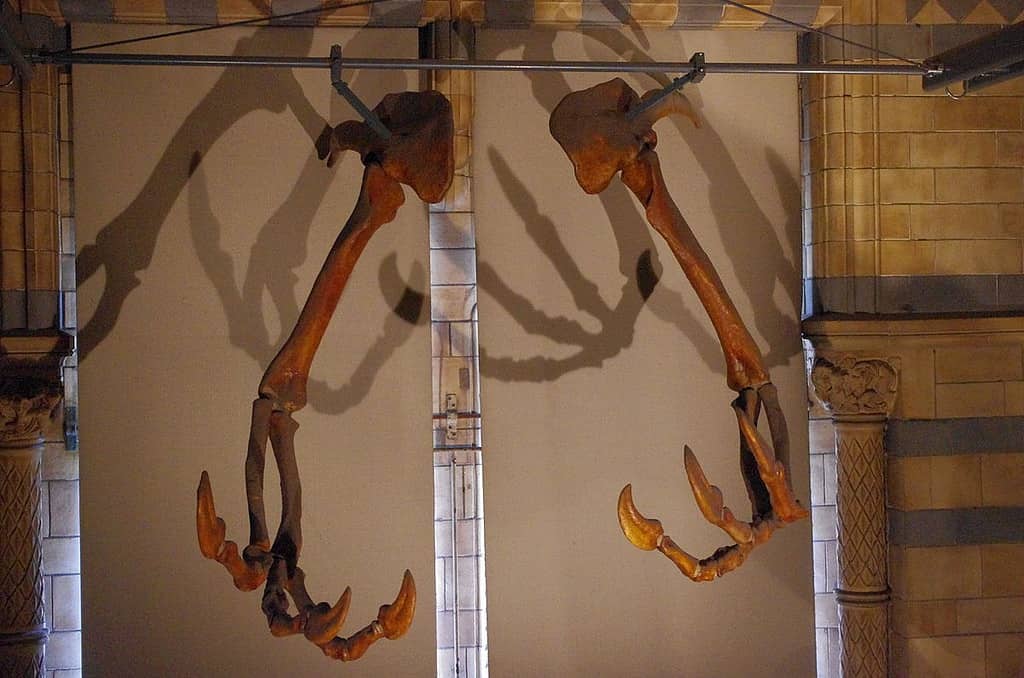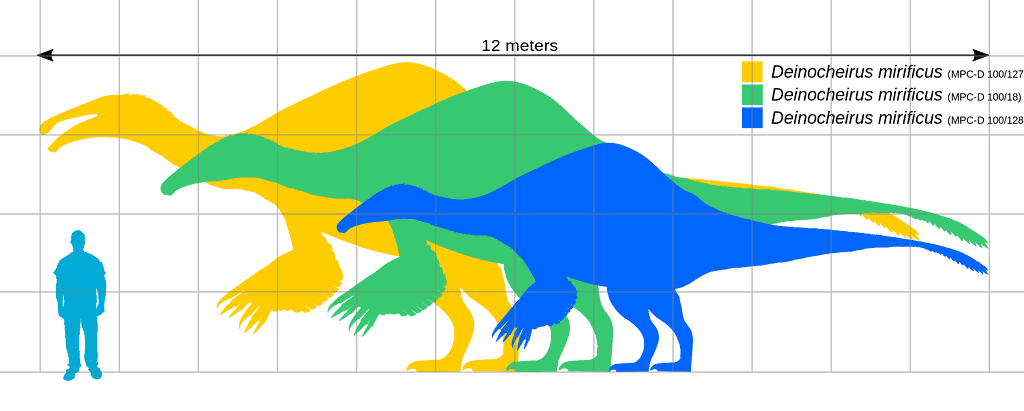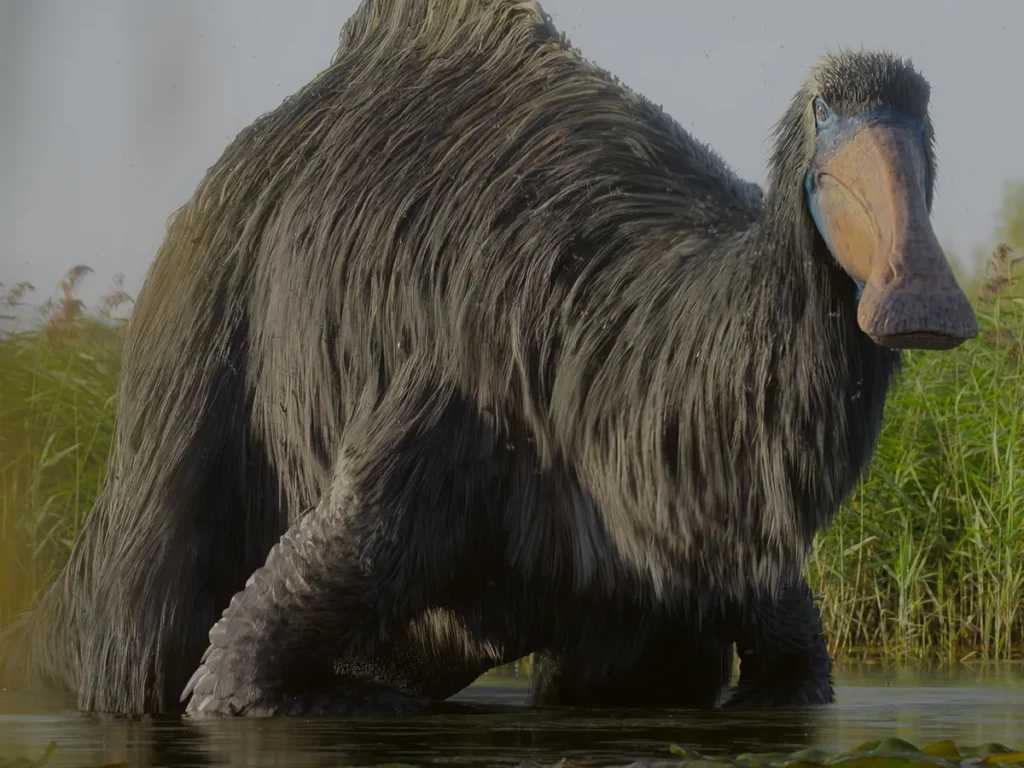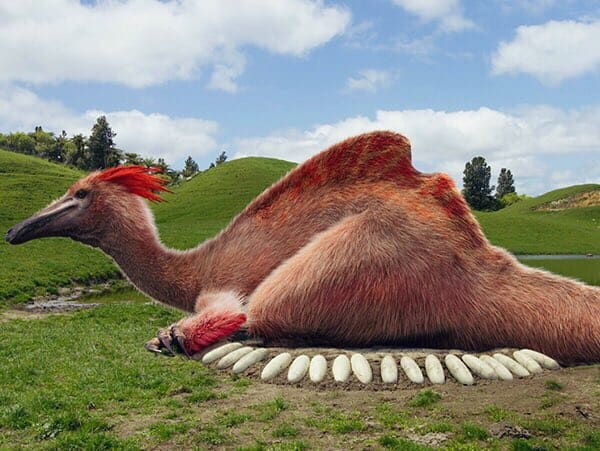Imagine unearthing a set of enormous arms with clawed hands, belonging to an unknown creature from 70 million years ago. This was what happened to paleontologists in 1965, who stumbled upon such a find in the Nemegt Formation of Mongolia. Hence the world was introduced to Deinocheirus, the “Terrible Hand.” For decades, these massive limbs were a mystery, as no further remains emerged to paint a picture of the animal. It wasn’t until 2014 that the veil of mystery began to lift, thanks to the discovery of more complete specimens. This article aims to cover the discovery, description, and significance of a prehistoric giant that defies the typical dinosaur mold.

Discovery and History
The saga of Deinocheirus begins in the Gobi Desert, specifically within the fossil layers of the Nemegt Formation in Mongolia. This region would yield a discovery in 1965 that perplexed the scientific community for nearly half a century. Polish paleontologist Zofia Kielan-Jaworowska unearthed the first known remains of Deinocheirus—two massive arms, shoulder girdles, and a smattering of other bones. These fragmentary remains were unlike anything seen before, characterized by their enormous hands and claws.
In 1970, these pieces were officially classified as the holotype of a new species, Deinocheirus mirificus, whose name means “Unusual Terrible Hand”. With so little evidence, Deinocheirus was an enigma. Despite extensive searches, no further remains surfaced for decades, leaving many questions unanswered.

The breakthrough came in 2014. Paleontologists described two more complete specimens that had been discovered in Mongolia. These new finds included much of the dinosaur’s skeleton, except for the skull and some parts of the limbs, which had been looted but were later repatriated to Mongolia. These specimens would finally reveal Deinocheirus to the world, beyond its mysterious limbs, oddly
Description of Deinocheirus
Deinocheirus stood as an unparalleled giant among the ornithomimosaurians, a group of dinosaurs previously known for their slender builds. Measuring an impressive 11 meters in length and weighing around 6.5 tons, it was the largest member of its clade. Despite its hefty build, Deinocheirus had many hollow bones, a feature that lightened its weight. The arms, measuring 2.4 meters long, were among the largest of any bipedal dinosaur. Ending in large, blunt claws the arms’ purpose remained unknown until the discovery of more complete specimens.

The dinosaur’s legs were relatively short, supporting its massive body on blunt-clawed feet. Its vertebrae boasted tall neural spines, creating a distinctive “sail” along its back. This feature and the highly pneumatised bones suggested adaptations for weight reduction due to its large size. Equally fascinating was its tail, ending in pygostyle vertebrae similar to modern birds, hinting at the presence of a fan of feathers. Although feathers were not uncommon in theropods they were surprising for a dinosaur of its size.
One surprising feature revealed by the 2014 excavations was that it probably had a huge belly, fondly described as a “beer belly” by the researchers.
“This is definitely an unusual animal,” says Thomas Holtz, Jr., a vertebrate paleontologist at the University of Maryland in College Park, who wrote an accompanying News & Views piece. “It had more of a ‘beer belly’ than your typical ornithomimosaur,” he suggests.

The one-meter-long skull of Deinocheirus was equipped with a wide bill and a deep lower jaw, resembling the duck-billed hadrosaurs. The discovery of fish scales and gastroliths near one specimen suggests Deinocheirus was an omnivore. Its jaws were toothless, and the skull shape implied a specialization in foraging for plants and small animals. It’s definitely one of the weirdest dinosaurs that we know. Deinocheirus challenged modern perceptions of dinosaur morphology and behavior and proved how varied dinosaur life was during the Late Cretaceous.
Classification and Relatives
Initially, with only its gigantic arms to go for, paleontologists weren’t sure how to describe Deinocheirus. It was a puzzle piece that seemed to fit nowhere among the known dinosaur groups. Early assumptions placed it among the carnosaur theropods, the large bipedal predators. However, this classification was based on incomplete information and was soon to be challenged.
The analysis of more complete specimens illuminated Deinocheirus’ place in the dinosaurian lineage. It was an ornithomimosaur, a group often dubbed “ostrich dinosaurs” for their bird-like appearance and bipedal gait. This reclassification reimagined Deinocheirus from a fearsome predator to a behemoth omnivore with a peculiar set of adaptations.

Deinocheirus is now recognized as basal ornithomimosaur, most closely related to Garudimimus and Beishanlong. Together, these genera form the Deinocheiridae family, distinguished by several unique features not found in other ornithomimosaurs. Deinocheirids stand out for their sheer size, robust build, and unusual physical traits such as long arms with large claws, back sails, and a hadrosaur-like skull. These characteristics set deinocheirids apart from the typical ornithomimosaur blueprint.
Palaeobiology and Behavior
The discovery of gastroliths and fish scales within the abdominal region of Deinocheirus points to an omnivorous diet. The beak structure and the large tongue suggest an adaptation for foraging in water bodies. This dinosaur scooped up vegetation and possibly sieved through mud for aquatic prey. This behavior is akin to modern ducks and waterfowl, indicating a sophisticated method of food acquisition that allowed Deinocheirus to exploit a range of food sources.

Paleontologists once thought its long arms and large claws were tools of predation. However, it is more likely for Deinocheirus to have been used for foraging, digging, fishing, and perhaps even defense. The elongated neural spines on its back might have served for thermoregulation and display behaviors to communicate with other Deinocheirus or deter rivals and predators.
While evidence of Deinocheirus‘ social behavior is sparse, the nature of its adaptations suggests it was not a solitary animal. The back sail and fan of feathers at the tail end could have been potential display features. Display features usually imply a level of social interaction, whether for mating purposes or hierarchical disputes within groups. Paleontologists also speculate that Deinocheirus‘ arm feathers could have been used for keeping its eggs warm.

Its relatively short legs and large, flat feet suggest a life spent more in slow-moving waters and marshlands than in fast-paced chases across the plains. This dinosaur’s morphology indicates a creature adapted to wading through shallow waters, where its size would deter most predators, and its diet could be easily supplemented by the rich aquatic flora and fauna.
Paleoecology
The Late Cretaceous Mongolia serves as the backdrop to the intriguing life of Deinocheirus. This environment, dating back approximately 70 million years ago, was markedly different from the arid landscape we see today. During those ancient times, the Nemegt Formation was dotted by extensive river systems, lakes, and floodplains, suggesting a humid and varied climate. This environment was home to a wide variety of animals, including other dinosaur species, mammals, reptiles, and fish.

Deinocheirus shared this habitat with the “alarming” Tarbosaurus and evidence points towards a predator-prey dynamic between the two. The formation also housed various herbivores, from the armored Saichania, to the titanic Nemegtosaurus, and agile Saurolophus. The presence of such diverse fauna indicates a highly interconnected ecosystem. The omnivorous Deinocheirus might have foraged along the water’s edge, crossing paths with both predators and prey.
Deinocheirus in Popular Culture
Though not as universally recognized as some of its dinosaurian peers, Deinocheirus has recently made a popular culture breakthrough in documentaries, TV specials, and video games.
“Amazing Dinoworld” focuses an entire episode on the life of a young Deinocheirus female. She is depicted surviving a Tarbosaurus pursuit, growing into adulthood, and even becoming a mother. The documentary explores how this dinosaur might have interacted with other species, whether competing for resources, avoiding predators, or even living in groups. It speculates on the social behavior of Deinocheirus, considering its potential for complex interactions with others of its kind, based on the evidence of its physical adaptations and the environment it inhabited.

In “Prehistoric Planet”, Deinocheirus is presented in stunning visual detail, roaming ancient waterways and foraging alongside other Cretaceous giants. The series brings to life its peculiar anatomy with vivid realism, highlighting its enormous arms and unique feeding habits.
The National Geographic special “Bizarre Dinosaurs” introduces Deinocheirus as one of the most peculiar dinosaurs ever discovered. It focuses on the dinosaur’s odd characteristics, such as its massive arms and sail-like back. Through expert interviews and animations, the show explores the theories surrounding its lifestyle and the evolutionary advantages its unique features might have offered.
In the video game “Path of Titans”, Deinocheirus emerges as a playable character, offering gamers the opportunity to experience life as this giant. Players navigate through ancient landscapes where they encounter other dinosaurs and face survival challenges. This interactive experience brings fans closer to understanding the dinosaur’s physical capabilities and ecological niche, albeit in a fictionalized setting.






